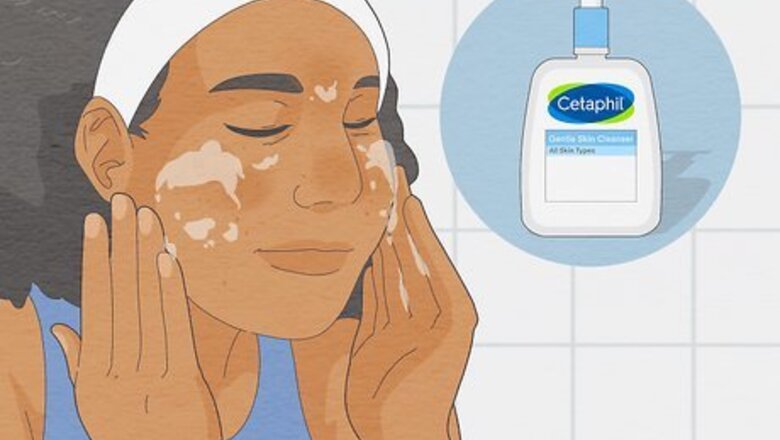
views
- Improve your skin texture by cleansing your face twice a day to remove any impurities, and use a moisturizer with niacinamide to keep your skin smooth and hydrated.
- Apply a chemical or physical exfoliant to buff away dead skin cells, or opt for a chemical peel for a deeper exfoliating treatment.
- Incorporate a retinol gel or serum into your nighttime skincare routine to smooth out your skin, minimize fine lines and wrinkles, and reduce signs of sun damage.
Treating Uneven Skin Texture

Wash your face with a gentle cleanser to exfoliate your skin. To improve the texture of your skin, wash your face after waking, before sleeping, and after sweating. Unless you consult a dermatologist to address the cause of your poor skin texture, use a gentle cleanser to remove any dirt, oil, and pollutants. If you leave grime on your skin, it can cause free radical damage (and breakouts), which can lead to greater skin damage and uneven texture over time. Use lukewarm water to wash your face, and pat your face dry with a clean towel to avoid irritation. If you’re wearing heavy makeup or sunscreen, double cleanse with a cleansing balm before going in with your normal cleanser. This ensures your cleanser penetrates your skin, instead of just removing the top layer of product.
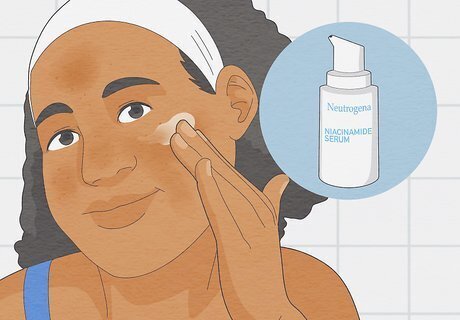
Use a moisturizer with niacinamide. No matter what skin type you have, apply moisturizer every morning and night for smooth, hydrated skin. Niacinamide is a form of vitamin B3 that’s known to minimize fine lines and wrinkles, and it can help strengthen the skin barrier. Apply a nickel-sized amount of niacinamide moisturizer after washing your face for better absorption. If you have oily skin, use a lighter niacinamide gel cream to prevent clogged pores and breakouts. In addition to niacinamide, look for moisturizers with other hydrating and calming ingredients like ceramides, hyaluronic acid, mineral oil, and lanolin.
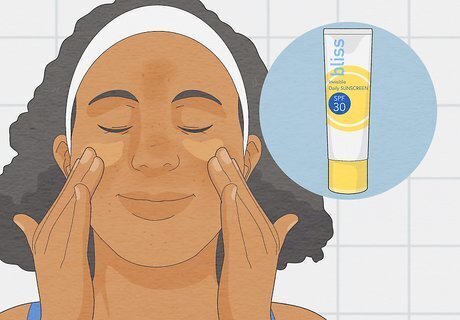
Wear sunscreen with at least SPF 30 daily. Prolonged exposure to the sun can lead to issues with uneven skin texture and pore size, as well as fine lines, wrinkles, and dullness. To protect yourself from the sun, apply a nickel-sized amount of broad spectrum, water resistant sunscreen with a SPF of 30 or higher every day. Even if you’re indoors all day, sun that comes in from the windows can damage the skin and contribute to photoaging and skin texture issues. For even more protection, choose a tinted sunscreen with SPF 30, which can protect your skin against non UV rays, such as blue light emitted from device screens.

Apply vitamin C serum to smooth out uneven texture. Vitamin C is a powerful skincare ingredient that can protect your skin from environmental damage and photoaging. Gently rub 2-3 drops of vitamin C serum onto your face at night, then wait 5-10 minutes to let it absorb into your skin (before applying moisturizer). Studies show vitamin C also reduces the look of fine lines and wrinkles, and improves the overall texture and appearance of your skin. If you have sensitive skin, patch test your skin first to check for an allergic reaction: rub 1 drop of serum onto a small patch of your inner wrist, then wait 24 hours to see if your skin is red or irritated. If so, do not incorporate it into your skincare routine.
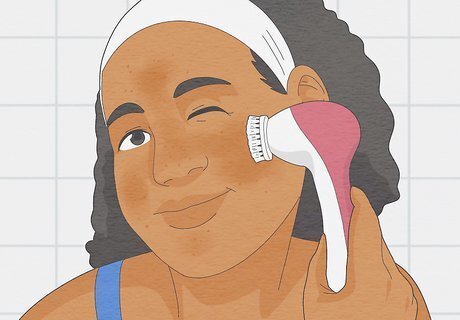
Exfoliate to buff away dead skin cells. Exfoliating 1-3 times per week can help you maintain optimal skin texture, but be sure to pick the right exfoliator for your face. If you’re using a physical exfoliant, cleanse your face, then apply a quarter-sized amount of exfoliator on your fingertips. Gently rub the product across your face using small, circular motions and rinse off with lukewarm water. For a chemical exfoliant, follow the directions of your specific product to see how to safely apply it. If you have normal or combination skin, use a chemical or physical exfoliant, such as a scrub or exfoliating face brush. If you have oily, dry, or sensitive skin, opt for a chemical exfoliant with lactic or glycolic acid, which is less irritating than physical exfoliants.

Try a chemical peel for deeper exfoliation. A chemical peel uses a chemical solution to shed the top layer of your skin and reveal more youthful skin underneath. For a targeted treatment, schedule an appointment with your dermatologist to get a higher concentration of ingredients, or apply a chemical peel at home. Look for OTC masks with alpha-hydroxy acids (AHAs) or beta-hydroxy acids (BHAs): If you have oily or acne-prone skin, use a salicylic acid peel, which works to deeply exfoliate your pores. If you have sensitive or dry skin, use a lactic acid peel, which gently exfoliates while increasing ceramides in your skin barrier.
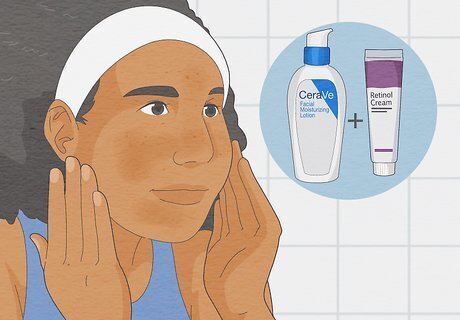
Add retinol into your skincare routine. Retinol works by actively peeling away the top layer of your skin, smoothing out your skin, reducing the appearance of wrinkles, and minimizing signs of photoaging. To incorporate retinol into your routine, start with a pea-sized amount of retinol gel (or 2-3 drops of retinol serum) every other day, then use it daily after 3-4 weeks. If you’ve never tried retinol before, you may experience dry, flaky skin at first. To avoid this, use the “retinoid sandwich” method: apply a layer of moisturizer before and after your retinol to protect your skin barrier. Retinol increases your skin’s sensitivity to the sun so only apply it at night, and wear sunscreen and sun protective clothing during the day to manage the side effects.
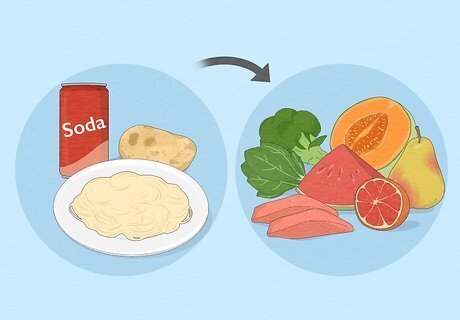
Clean up your diet to improve skin texture. A healthy, balanced diet can help your skin appear more smooth and radiant. Eat lots of fruits, vegetables, whole grains, and lean proteins, and drink at least 6 cups of water each day to keep your skin hydrated. To protect your skin from free radical damage (which can lead to uneven skin texture), add more omega-3s and antioxidants into your diet: Foods high in omega-3s include: salmon, mackerel, herring, tuna, flaxseeds, chia seeds, walnuts, almonds, edamame, canola or soybean oil. Food high in antioxidants include: tomatoes, citrus, bell peppers, broccoli, strawberries, kiwi, grapes, almonds, sunflower seeds, tea, coffee, dark chocolate Processed and refined foods, and foods with a high glycemic index (white bread, pasta, potatoes, sugar drinks), can cause skin inflammation and breakouts. Eliminate these foods or eat them in moderation to maintain smooth, even skin.
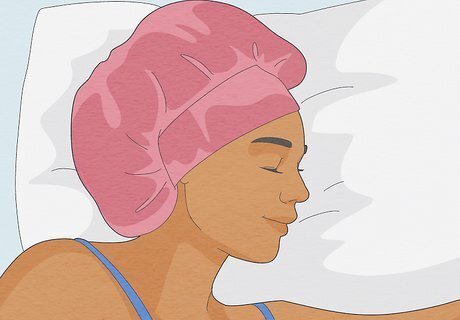
Get at least 7 hours of sleep each day. When you sleep, your skin goes into repair mode, allowing your body to regenerate the cells that make you look refreshed and revitalized. Sleep deprived individuals have more prominent signs of photoaging, especially when it comes to skin tone and texture. Try to aim for 8 hours of quality sleep, or sleep at least 7 hours every night. Limit your consumption of alcohol and caffeine, and turn off your electronic devices at least one hour before bedtime to improve your quality of sleep. Try to sleep on your back to prevent wrinkles, skin irritation, and breakouts (from your face touching your pillowcase). Or, switch to a skin-friendly silk pillowcase to minimize friction and creasing.
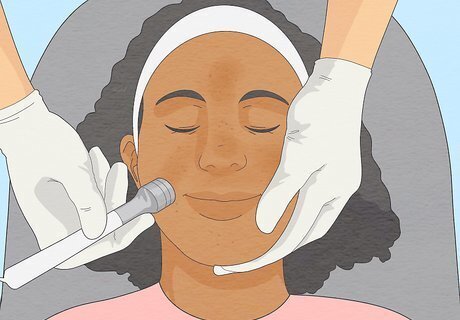
Schedule an appointment with your dermatologist. If your skin doesn’t respond to at-home treatments or lifestyle changes, consult with a dermatologist to discover the root cause of your skin texture issues. A dermatologist can also administer stronger and longer-lasting treatments to target uneven texture, fine lines, wrinkles, and any other skincare concerns. Laser skin resurfacing treatments can help diminish the look of scars, remove acne, and improve the skin’s overall appearance. Microneedling creates tiny punctures in the top layer of the skin to prompt skin cell production, which can treat enlarged pores, acne or surgical scars, fine lines and wrinkles, sun damage and age spots, and rough patches and other texture problems. Dermaplaning is the procedure of removing the top layer of facial hair with a knife or razor. It gently exfoliates the skin to help minimize the appearance of scars, fine lines, wrinkles, and dull skin. Microdermabrasion is a treatment that involves using a fine tipped instrument to gently exfoliate the skin with tiny crystals. It helps treat surface-level skin problems like fine lines, dullness, acne scars, and photodamage.
What is uneven skin texture?
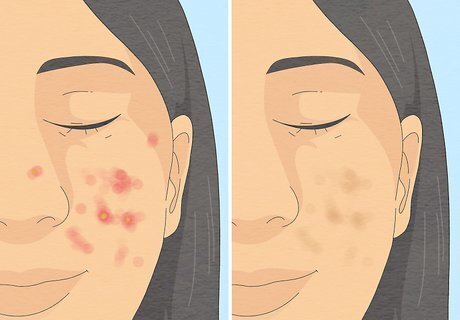
Uneven skin texture is the buildup of dead cells on the skin’s surface. It includes bumps, pits, dry patches, wrinkles, acne scarring, enlarged pores, or anything else that makes your skin look rough and textured. Due to these symptoms, people with uneven skin texture often experience other skincare issues like redness, inflammation, and hyperpigmentation as well. Textured skin can be caused by a variety of factors, including genetics, lifestyle, sun exposure, aging, acne, and certain chronic skin conditions like eczema, psoriasis, and keratosis pilaris. If you run your finger across your skin and it feels rough or bumpy to the touch, it means you have uneven skin texture.
Does skin texture change with age?
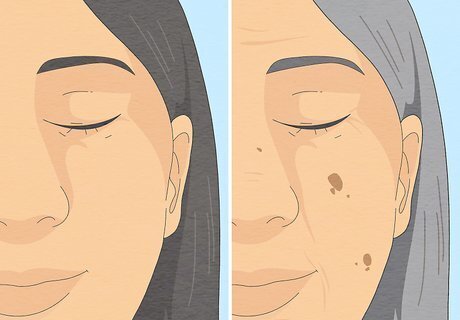
Yes, cell turnover slows down with age, which affects skin texture. As you get older, your skin becomes thinner and has a harder time shedding dead skin cells. It takes longer for scratches, bumps, and cuts to heal, making any skin texture issues more prominent. Your skin naturally loses plumpness and smoothness over time, especially if you spent years suntanning or being in the sun without wearing SPF. To reduce signs of aging, limit your time in the sun, especially during the middle of the day. Exposure to UV light can cause wrinkles, age spots, and skin tags, and it can increase your risk for skin cancer. Always wear sunscreen and reapply it every 2 hours, and wear sun protective clothing like sunglasses and hats. For mature skin, choose anti-aging products to improve your skin texture. Ingredients like vitamin A, coenzyme Q10, polypeptides, grape seed extract can help repair sun damage and minimize wrinkles.
Why did my skin texture change suddenly?
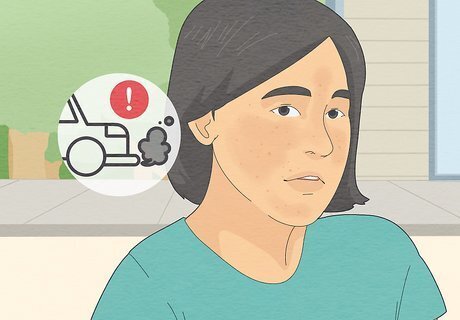
Sudden skin texture changes are often caused by the environment. If you experience a sudden change in skin texture, there’s no need to panic—it’s most likely due to external factors like diet, pollution, or stress. Improve your eating habits, stay hydrated, get enough sleep, and incorporate one of the skincare treatments above to see if it makes a difference. Or, schedule an appointment with a dermatologist for quicker, personalized treatment. Stress can prompt acne flare-ups and itchy skin, so prioritize your well-being to maintain a clear complexion. Relax your mind by reading, meditating, listening to music, and making time to do things you love. Sometimes, your skin texture can indicate an internal health issue like lupus or thyroid disease. If your skin texture worsens, continues after 2 weeks, or is accompanied by fever or joint pains, schedule an appointment with a dermatologist as soon as possible to get to the root of the issue.




















Comments
0 comment